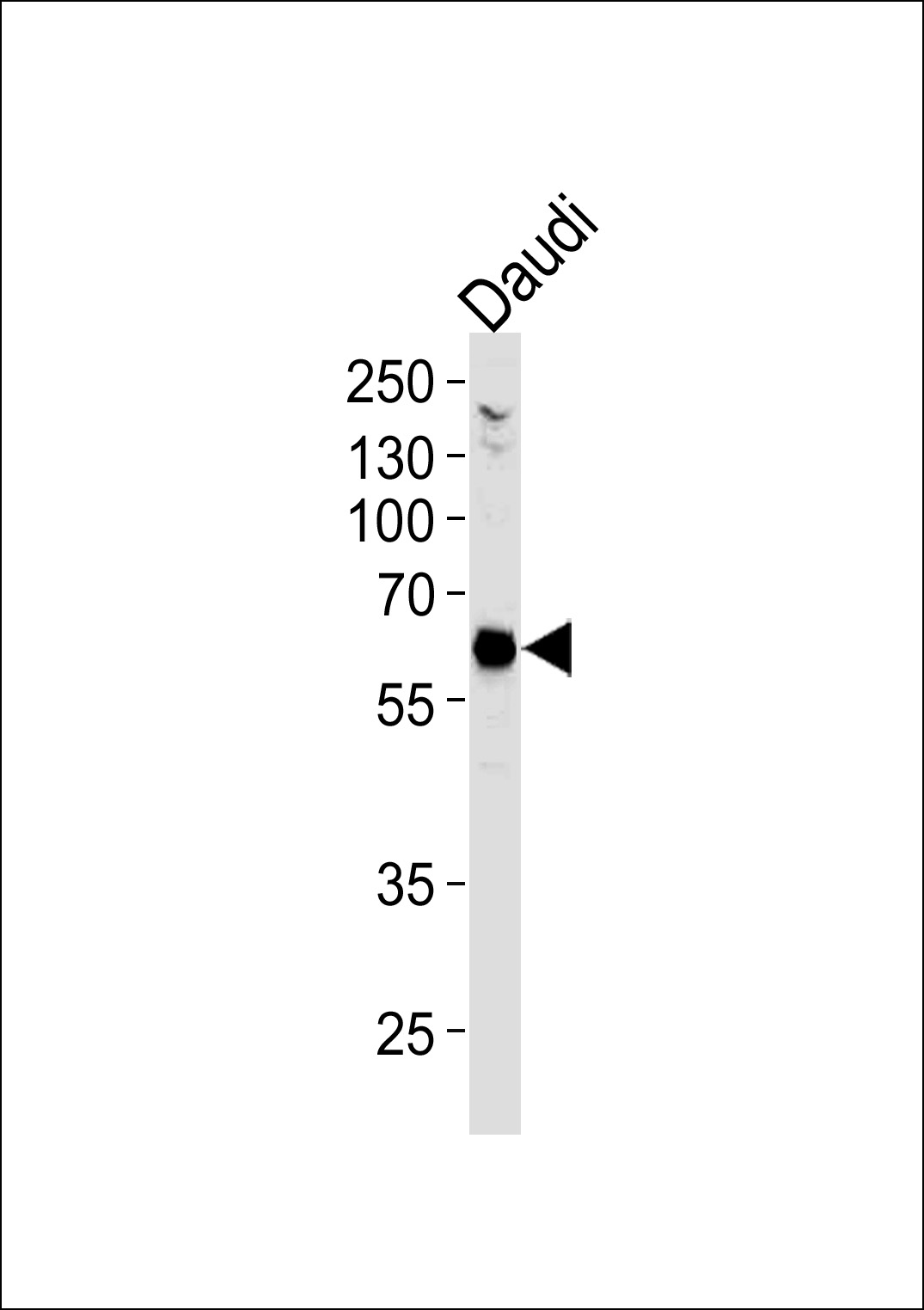USP22 Antibody (C-term)
Mouse Monoclonal Antibody (Mab)
- 产品详情
- 实验流程
- 背景知识
Application
| WB, E |
|---|---|
| Primary Accession | Q9UPT9 |
| Reactivity | Human |
| Host | Mouse |
| Clonality | Monoclonal |
| Isotype | IgG1 |
| Clone Names | 1154CT13.1.3.1 |
| Calculated MW | 59961 Da |
| Gene ID | 23326 |
|---|---|
| Other Names | Ubiquitin carboxyl-terminal hydrolase 22, Deubiquitinating enzyme 22, Ubiquitin thioesterase 22, Ubiquitin-specific-processing protease 22, USP22, KIAA1063, USP3L |
| Target/Specificity | Purified His-tagged USP22 protein was used to produced this monoclonal antibody. |
| Dilution | WB~~1:500 E~~Use at an assay dependent concentration. |
| Format | Purified monoclonal antibody supplied in PBS with 0.09% (W/V) sodium azide. This antibody is purified through a protein G column, followed by dialysis against PBS. |
| Storage | Maintain refrigerated at 2-8°C for up to 2 weeks. For long term storage store at -20°C in small aliquots to prevent freeze-thaw cycles. |
| Precautions | USP22 Antibody (C-term) is for research use only and not for use in diagnostic or therapeutic procedures. |
| Name | USP22 |
|---|---|
| Synonyms | KIAA1063, USP3L |
| Function | Deubiquitinase that plays a role in several cellular processes including transcriptional regulation, cell cycle progression or innate immunity. As part of the transcription regulatory histone acetylation (HAT) complex SAGA, catalyzes the deubiquitination of both histones H2A and H2B, thereby acting as a transcriptional coactivator (PubMed:18206972, PubMed:18206973, PubMed:18469533). Recruited to specific gene promoters by activators such as MYC, where it is required for transcription. Facilitates cell-cycle progression by stabilizing CCNB1 and antagonizing its proteasome-mediated degradation in a cell cycle-specific manner (PubMed:27030811). Modulates cell cycle progression and apoptosis also by antagonizing TP53 transcriptional activation through deacetylase SIRT1 stabilization (PubMed:22542455). Plays multiple roles in immunity and inflammation. Participates in antiviral response by deubiquitinating the importin KPNA2, leading to IRF3 nuclear translocation and subsequent type I interferon production (PubMed:32130408). Acts as a central regulator of type III IFN signaling by negatively regulating STING1 activation and ubiquitination (PubMed:35933402). Inhibits NLRP3 inflammasome activation by promoting NLRP3 degradation through ATG5-dependent autophagy (By similarity). Deubiquitinates CD274 to induce its stabilization and thereby participates in maintenance of immune tolerance to self (PubMed:31399419). Controls necroptotic cell death by regulating RIPK3 phosphorylation and ubiquitination (PubMed:33369872). During bacterial infection, promotes pro-inflammatory response by targeting TRAF6 and removing its 'Lys-48'-linked polyubiquitination (By similarity). |
| Cellular Location | Nucleus. Cytoplasm {ECO:0000250|UniProtKB:Q5DU02} |
| Tissue Location | Moderately expressed in various tissues including heart and skeletal muscle, and weakly expressed in lung and liver |
For Research Use Only. Not For Use In Diagnostic Procedures.
Provided below are standard protocols that you may find useful for product applications.
BACKGROUND
Histone deubiquitinating component of the transcription regulatory histone acetylation (HAT) complex SAGA. Catalyzes the deubiquitination of both histones H2A and H2B, thereby acting as a coactivator. Recruited to specific gene promoters by activators such as MYC, where it is required for transcription. Required for nuclear receptor-mediated transactivation and cell cycle progression.
REFERENCES
Kikuno R., et al. DNA Res. 6:197-205(1999).
Bechtel S., et al. BMC Genomics 8:399-399(2007).
Lee H.-J., et al. Gene Expr. Patterns 6:277-284(2006).
Zhao Y., et al. Mol. Cell 29:92-101(2008).
Zhang X.-Y., et al. Mol. Cell 29:102-111(2008).
终于等到您。ABCEPTA(百远生物)抗体产品。
点击下方“我要评价 ”按钮提交您的反馈信息,您的反馈和评价是我们最宝贵的财富之一,
我们将在1-3个工作日内处理您的反馈信息。
如有疑问,联系:0512-88856768 tech-china@abcepta.com.























 癌症的基本特征包括细胞增殖、血管生成、迁移、凋亡逃避机制和细胞永生等。找到癌症发生过程中这些通路的关键标记物和对应的抗体用于检测至关重要。
癌症的基本特征包括细胞增殖、血管生成、迁移、凋亡逃避机制和细胞永生等。找到癌症发生过程中这些通路的关键标记物和对应的抗体用于检测至关重要。 为您推荐一个泛素化位点预测神器——泛素化分析工具,可以为您的蛋白的泛素化位点作出预测和评分。
为您推荐一个泛素化位点预测神器——泛素化分析工具,可以为您的蛋白的泛素化位点作出预测和评分。 细胞自噬受体图形绘图工具为你的蛋白的细胞受体结合位点作出预测和评分,识别结合到自噬通路中的蛋白是非常重要的,便于让我们理解自噬在正常生理、病理过程中的作用,如发育、细胞分化、神经退化性疾病、压力条件下、感染和癌症。
细胞自噬受体图形绘图工具为你的蛋白的细胞受体结合位点作出预测和评分,识别结合到自噬通路中的蛋白是非常重要的,便于让我们理解自噬在正常生理、病理过程中的作用,如发育、细胞分化、神经退化性疾病、压力条件下、感染和癌症。






